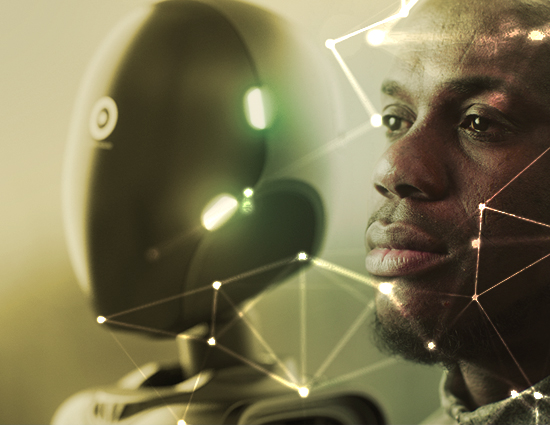The performance of telecommunication networks is advancing at an amazing rate – matched only perhaps by sky-high user expectations when it comes to associated products and services. Escalating performance is driving increasing complexity, and a growing presumption that artificial intelligence will play a key role in optimisation. The only problem is that no-one has yet worked out what that means. What exactly will AI be optimising for?
Our view here at Cambridge Consultants is that user experience – or more specifically user happiness – could provide the key. Let me explain how. Telecom networks are a hotbed of innovation, with the rollout of 5G services, the opportunities of private networks and plans for high-altitude platforms ensuring continuing momentum. AI has potential to optimise the host of interrelated aspects of the network to deliver the best overall user experience. But measuring user experience is difficult – and even more so when a network operators’ ability to make users happy is affected by the performance of their device and application software.
Difficult perhaps, but it’s the crux of our hypothesis, nonetheless. Let’s go a little deeper and dig into what optimisation might mean. You could perhaps attempt to set AI to work to adjust the countless knobs and dials in a network to reduce the number of dropped packets. But we are suggesting that dropped packets are not the thing that you as an operator actually care about. What you really care about is the user experience. And once you have a measure for that, you have a real reason to adjust the dials. Suddenly, optimisation truly means something.
5G’s future is hybrid – the non-terrestrial opportunity
Optimising for user experience in telecoms
My stance then, is that optimising for user happiness (by which I mean a positive user experience) should be the true goal of operators when applying AI to manage their networks. This is not easy, but as we’re seeing in all sectors, the good news is that AI is extremely well suited to inferring abstract human concepts from raw data – from recognising a smiling face amid a collection of pixels to understanding emotion from an audio signal.
So, let’s look at a pressing real-world example to see how we could infer user happiness from raw network traffic. The case in point is video conferencing and chat. In mobile and wireless terms, the success of video calls in supporting remote working is obvious – but the frustrations are also evident. Jerky, poor resolution or frozen video, unsynchronised audio and video and poor resolution on screen sharing are all common complaints. Users have become accomplished at making the most of the available service. We’re all adept at switching off virtual backgrounds and video to preserve audio quality or muting to address background noise or echo. But what can be done by network operators to minimise these markers of user unhappiness?
The most common model is the use of a video telephony application, such as Zoom or Teams over an IP bearer. This creates a conundrum for network operators. Application and content providers are focused on delighting their users and are increasingly collecting their own user feedback within the application and taking their own steps to achieve user happiness.
For example, QUIC is a transport layer protocol sometimes dubbed TCP/2, which demands multiple streams of encrypted UDP data with no regard for the network state and which deny the network operator any insight into the encrypted traffic. Other complications are that individual users may change location or behaviour to adapt to the available service. The hardware may also influence performance, with video processing being a key bottleneck.
The result is that the different components of the system interact in immensely complex ways. What can a network operator do to control the overall user experience? Is their only option adding network capacity, or can they negotiate more efficient trade-offs between loading, customer/service prioritisation, bandwidth?
Characterising the instantaneous link quality
The network operator knows the traffic profile and is aware of dropped packets and connections. It can characterise the instantaneous link quality; the block error rate and latency as well as detailed information on MIMO rank and spatial beam-forming metrics (in the case of a mobile service). It knows the approximate location of users and can (with due regard for privacy) track performance against location, time of day and bearer types.
Thus, the network operator has access to enormous amounts of data, and the application of AI, which can infer complex properties from raw data, is an attractive option. But the problem is mapping this data to the intangible user happiness when separated from the users experience by the intervening application.
This is a system-level problem, where the end-points of the system are accessible but intervening elements, such as applications, must be treated as black boxes. Similar problems have been successfully solved in fields such as language recognition and autonomous driving by the application of end-to-end deep learning, where a single optimisation criterion is used to enhance the system.
As an initial step, operator data could be used to characterise the behaviour of unidentified applications in the field, in terms of the demands they make on the network under different conditions. The key to this dataset would be to capture the relationship between a user’s experience of an application and the raw network traffic behind that experience. Imagine something akin to a clinical trial – because collecting this experimentally would require observing users as they interacted with a set of common applications and labelling segments of network traffic data with the users’ experience.
Emerging AI in telecommunications
As is common in many emerging AI applications, collecting large volumes of this type of data is fairly costly and therefore experimentally collected data should be augmented by simulations and AI-synthesised data. In this case, AI-synthesised data can be generated through a neural network (specifically a generative adversarial network) which has learned the relationship between user experience and raw network traffic and so can create new examples.
Delivering this would allow operators to infer, in real time, the experience of individual users in a way never before seen. Once this link is established for each identified application, optimisation can follow.
5G has the potential to accelerate this approach. The exposure of network analytics to the application layer via specific APIs combined with network slicing opens up the possibility of efficiently delivering quality of service on a packet by packet basis, allowing the service to be precisely tuned for particular applications. This also creates the possibility to create trial groups of users, who receive benefits to test different models.
5G network rollout
As 5G networks are rolled out and automation of network performance comes to the fore, the players who are optimising for the right output, that is user happiness, can negotiate more efficient trade-offs in network capacity and performance and are likely to end up the winners.
Applying these concepts to telecom equipment and services holds the promise of network operators developing new levels of insight into their user’s experience. Beyond that, having this measure would allow optimisation efforts to look past measures such as bit errors and dropped packets to focus on the real objective: user happiness. Along the way, it would also give operators a new position in discussion with over-the-top players by generating unique insight into how user experience differs across different providers’ applications.
As I made clear at the start, this idea is experimental, but it follows a pattern seen across the use of deep-learning in other sectors where end-to-end learning is being explored for applications in language understanding and autonomous driving. End-to-end learning has pros and cons but, for telecoms operators, could allow real-time insight into their user’s happiness in a way which has never been achieved before. This would be new ground indeed – but it’s just one example of the many areas we’re developing AI and applying it to real-world challenges. Along with our experts in high-performance wireless systems, we can apply a unique combination of skills and expertise.
Do get in touch to discuss your ambitions for user happiness and how deep learning can be applied to solve real-world challenges in telecoms. Alternatively, you may find our latest whitepaper, written in collaboration with the GSMA of interest – 5G’s future is hybrid – the non-terrestrial opportunity.





